How to Plant Cilantro Seeds: Easy Steps for Fresh Herbs
- February 27, 2024
- 0 comment
Cilantro, also known as coriander, is a popular herb widely used in various cuisines around the world. Not only does it add a fresh, distinct flavor to dishes, but it’s also packed with vitamins and antioxidants. Growing cilantro at home is a great way to have a fresh supply of this delightful herb. This article will guide you through the process of planting cilantro seeds, ensuring a bountiful and healthy harvest.

Nutritional Benefits of Cilantro
| Benefit | Description |
|---|---|
| Nutritional Value | Cilantro is low in calories and rich in vitamins A, C, and K, as well as folate and potassium. |
| Antioxidant Properties | Contains antioxidants that help protect against oxidative stress and reduce inflammation, potentially lowering the risk of chronic diseases. |
| Digestive Health | May aid in digestion and help settle the stomach, reducing symptoms of indigestion and bloating. |
| Detoxifying Effects | Believed to have a detoxifying effect by helping to remove heavy metals from the body, due to its chelating properties. |
| Antimicrobial Properties | Contains antimicrobial compounds that may help fight certain infections and foodborne pathogens. |
| Heart Health | May have heart-protective effects due to its antioxidants and ability to lower bad cholesterol (LDL) levels while increasing good cholesterol (HDL) levels. |
| Blood Sugar Regulation | Some studies suggest cilantro might help in managing blood sugar levels, making it potentially beneficial for people with diabetes. |
| Skin Health | Rich in vitamin C, which is essential for healthy skin. Its antioxidant properties can also help in maintaining skin health and preventing signs of aging. |
| Anti-anxiety Effects | Some animal studies suggest cilantro may have a calming effect and could potentially be used as a natural sedative to reduce anxiety symptoms. |
| Allergy Relief | May help in reducing the symptoms of seasonal allergies and hay fever due to its natural antihistamine properties. |
Materials Needed
- Cilantro seeds
- Potting soil
- Containers or a garden plot
- Watering can or hose
- Mulch (optional)
Choosing the Right Time and Place
Cilantro prefers cooler temperatures and tends to bolt (flower and set seed) quickly in hot conditions. The ideal time to plant cilantro is in the spring or fall. Choose a sunny spot in your garden or a window that gets plenty of light if you’re planting indoors. Cilantro can tolerate light shade, especially in hotter climates.
Understanding Cilantro’s Temperature Preferences
- Cilantro thrives in cooler weather, typically between 50°F and 85°F (10°C to 29°C).
- In temperatures above 85°F (29°C), cilantro is prone to bolting, which means it will start to flower and produce seeds, and the leaves can become more bitter in taste.
- This herb is sensitive to extreme heat and direct sunlight in hot weather, which can cause it to wilt or bolt prematurely.
Ideal Planting Seasons
- Spring and fall are the best seasons for planting cilantro because of the milder temperatures.
- In spring, plant cilantro seeds a few weeks after the last frost when the soil has warmed up a bit.
- In the fall, plant cilantro seeds in late summer or early fall to harvest before the first frost. In milder climates, cilantro can grow through the winter.
Choosing the Right Location
- Outdoor Planting: Select a sunny spot in your garden that receives around 4-6 hours of sunlight daily. In regions with hotter climates, a location that gets morning sun and afternoon shade is ideal.
- Indoor Planting: If you’re planting cilantro indoors, choose a window that receives plenty of light, such as a south-facing window. Supplement with grow lights if natural light is insufficient.
Soil and Shade Considerations
- Cilantro prefers well-draining soil with a neutral pH. Amend garden soil with organic matter or compost to improve its quality.
- In hotter climates, light shade can be beneficial. Use shade cloth or plant cilantro where it will receive filtered sunlight, such as under taller plants or trees that provide partial shade.
Preparing the Soil
Whether you’re planting in pots or directly in the ground, it’s essential to use well-draining soil. Cilantro does not like to sit in waterlogged soil. If planting in a container, ensure it has drainage holes. Mix in some compost or organic matter to enrich the soil.
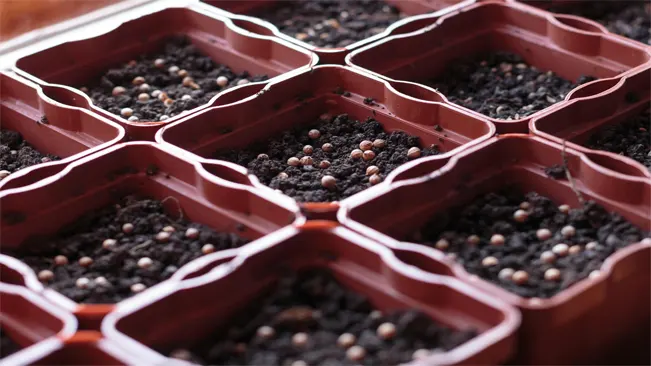
Importance of Well-Draining Soil
- Avoiding Waterlogging: Cilantro’s roots are sensitive to excessive moisture. Waterlogged soil can lead to root rot and other fungal diseases.
- Soil Texture: Ideally, the soil should be loamy and light. Heavy, clay-rich soils should be avoided or amended to improve drainage.
Preparing Soil in Containers
- Container Selection: Choose a container with adequate drainage holes to prevent excess water from accumulating.
- Potting Mix: Use a high-quality potting mix designed for containers, which typically ensures better drainage than regular garden soil.
- Depth of Container: A container with a depth of at least 8-10 inches is preferable, as cilantro has deep roots.
Preparing Soil in the Ground
- Site Selection: Choose a spot that receives ample sunlight but can be shielded from the intense midday sun in hotter regions.
- Soil Testing: It’s beneficial to test your garden soil for pH and nutrient levels. Cilantro prefers a pH between 6.0 and 7.0.
- Improving Soil Drainage: If your garden soil is heavy or clayey, incorporate organic matter like compost, aged manure, or leaf mold to improve its structure and drainage.
Enriching the Soil
- Organic Matter: Adding compost or aged manure not only improves drainage but also increases the soil’s nutrient content, which is beneficial for cilantro growth.
- Balanced Fertilization: While cilantro doesn’t require heavy feeding, a balanced, slow-release fertilizer can be added at the time of planting, especially if the soil is not rich in nutrients.
- Mulching: Applying a layer of organic mulch can help maintain soil moisture and temperature, as well as suppress weed growth.
Sowing the Seeds
Cilantro seeds can be sown directly into the soil. Plant the seeds about ¼ inch deep, spacing them about 6 to 8 inches apart. If planting in rows, keep each row approximately 12 inches apart. Lightly cover the seeds with soil.
Sowing Directly into the Soil
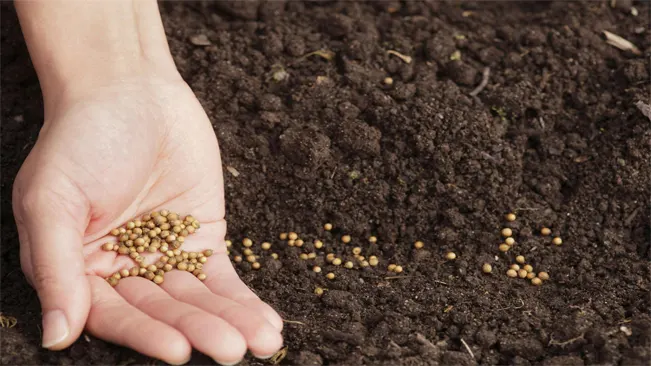
- Site Selection: Choose a location that receives plenty of sunlight. Cilantro can grow in partial shade but thrives best in full sun, especially in cooler climates.
- Soil Preparation: The soil should be well-draining and moderately fertile. If your soil is heavy or clayey, consider amending it with compost or sand to improve drainage. Cilantro does not require highly fertile soil; too much nitrogen can actually reduce its flavor.
- Planting Depth and Spacing: As mentioned, plant the seeds about ¼ inch deep. This shallow planting helps the seeds to receive enough light and warmth to germinate effectively. Space the seeds or small groups of seeds about 6 to 8 inches apart. If you’re planting multiple rows, keep the rows about 12 inches apart. This spacing allows adequate air circulation and room for growth.
- Watering After Planting: After planting, water the area gently but thoroughly. The goal is to moisten the soil without disturbing the seeds. Consistent moisture is crucial for germination, so aim to keep the soil evenly moist but not waterlogged.
- Thinning Seedlings: Once the seedlings emerge and reach a few inches in height, thin them out so that they are spaced about 6 to 8 inches apart. This might seem wasteful, but it’s necessary to prevent overcrowding and to ensure healthy growth.
- Succession Planting: For a continuous harvest, consider sowing new seeds every 2 to 3 weeks. Cilantro grows quickly and can be harvested within a few weeks of planting, so succession planting ensures you have a regular supply.
Watering
After planting, gently water the seeds. The key is to keep the soil moist but not overly saturated. If you’re growing cilantro in containers, you may need to water more frequently than in the ground.
Watering Cilantro Seeds and Seedlings
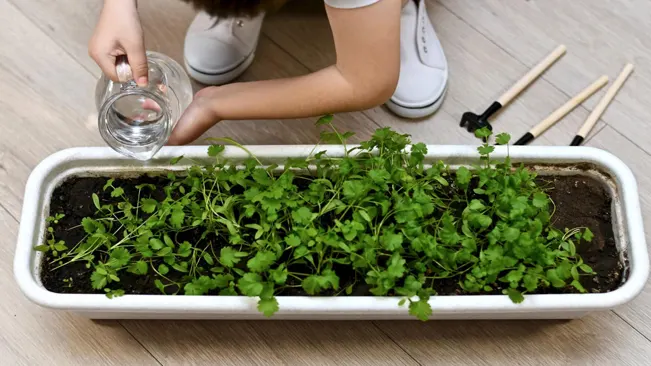
- Initial Watering After Planting
- After sowing cilantro seeds, it’s crucial to give them a good initial watering. This helps settle the soil around the seeds and ensures they have enough moisture to begin the germination process. The soil should be moist to the touch but not drenched.
- Maintaining Moisture Levels
- Consistent moisture is key for cilantro, especially during the germination and early seedling stages. The top layer of soil should never dry out completely. If it feels dry to the touch, it’s time to water.
- Avoiding Over-Watering
- While cilantro likes moist soil, over-watering can be detrimental. Excess water can lead to root rot or fungal diseases. It’s a delicate balance – the soil should be moist, but the plants shouldn’t sit in waterlogged soil.
- Watering Technique
- Use a gentle spray or a watering can with a fine rose to avoid disturbing the seeds or young seedlings. A harsh stream of water can displace the seeds or erode the soil around them.
- Frequency of Watering
- The frequency of watering depends on several factors like soil type, weather, and whether you’re growing cilantro in a container or in the ground. Container-grown cilantro often requires more frequent watering because pots can dry out faster than garden soil.
Germination
Cilantro seeds usually take between 7 to 10 days to germinate. Once the seedlings appear, ensure they receive plenty of light. If they’re too crowded, thin them out to allow for better air circulation and growth.
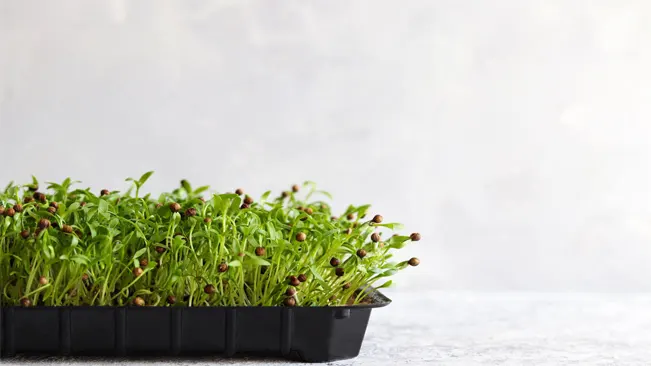
Key Factors for Successful Germination of Cilantro Seeds
- Moisture: Cilantro seeds need consistent moisture to germinate. The soil should be kept evenly moist but not waterlogged. Overwatering can lead to fungal diseases or rot.
- Temperature: While cilantro can tolerate cooler temperatures, the ideal soil temperature for germination is between 55-68°F (13-20°C). Too much heat can delay germination or prevent it altogether.
- Soil: Use a well-draining soil mix. Good soil aeration is essential for germination and root growth.
- Light: Cilantro seeds don’t require light to germinate, but once the seedlings emerge, they should be exposed to plenty of light. This could be natural sunlight or artificial grow lights, especially if you’re starting seeds indoors.
Thinning Seedlings
- Why Thin Seedlings: Cilantro seeds are often sown closely together and can germinate in dense clusters. Thinning is necessary to prevent overcrowding, which can lead to weak, spindly plants and increased susceptibility to diseases.
- How to Thin: Once the seedlings have a couple of true leaves (the leaves that appear after the initial seed leaves), thin them out. Choose the strongest, healthiest looking seedlings to keep. Gently pull out the smaller, weaker seedlings, or use a pair of scissors to snip them at the soil level.
- Spacing: Ideally, leave about 3-4 inches between each plant. This spacing allows for adequate air circulation and gives each plant enough room to grow.
Post-Germination Care
- Watering: Continue to water the plants regularly, keeping the soil moist but not soggy.
- Fertilization: Cilantro does not require heavy fertilization. If needed, a light application of a balanced, all-purpose fertilizer can be used.
- Transplanting: If you started the seeds in a tray or pot and plan to transplant them outdoors, do so once the seedlings are established and the outdoor temperatures are suitable.
Ongoing Care
Water the cilantro regularly, and if you’re growing it outdoors, consider using mulch to help retain soil moisture and control weeds. Fertilize lightly; cilantro does not require heavy feeding.
Watering Cilantro
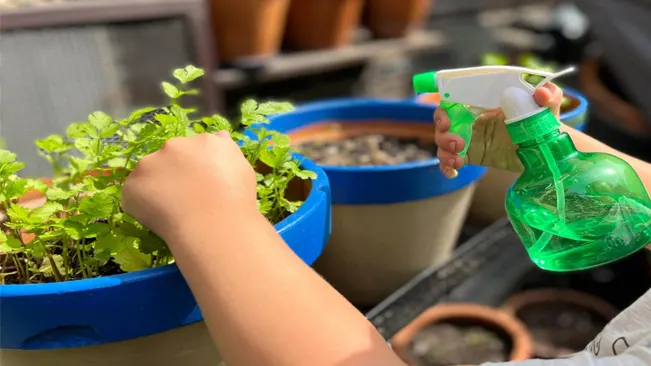
- Consistent Moisture: Cilantro prefers consistent soil moisture. Overwatering or underwatering can stress the plant, leading to poor growth or bolting (flowering prematurely).
- Watering Frequency: The frequency depends on climate and soil type. Generally, watering once or twice a week is sufficient. In hot, dry weather, more frequent watering may be necessary.
- Method of Watering: Use a gentle spray to avoid disturbing the soil or damaging the delicate foliage. Drip irrigation or a soaker hose is ideal for maintaining even soil moisture and preventing water from splashing on the leaves, which can spread disease.
- Checking Soil Moisture: Before watering, check the soil moisture by sticking your finger about an inch deep into the soil. If it feels dry at this depth, it’s time to water.
Mulching
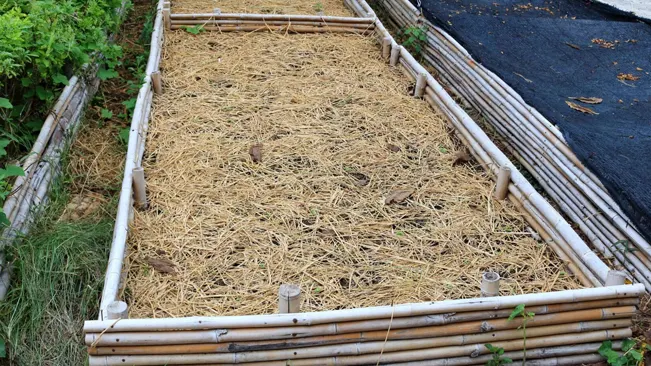
- Benefits of Mulching: Mulch helps retain soil moisture, suppresses weeds, and can provide a barrier against soil-borne diseases. It also helps keep the soil temperature stable.
- Types of Mulch: Organic mulches like straw, bark, or compost are ideal. They not only retain moisture but also add nutrients to the soil as they decompose.
- Application: Apply a thin layer (about 1-2 inches) of mulch around the base of the cilantro plants, being careful not to pile it against the stems, which could cause rot.
Fertilizing
- Light Feeding: Cilantro doesn’t require heavy feeding. Over-fertilization can lead to rapid, weak growth and fewer flavors in the leaves.
- Type of Fertilizer: A balanced, all-purpose, water-soluble fertilizer is suitable. Alternatively, use a slow-release granular fertilizer.
- Frequency: Fertilize once or twice during the growing season, depending on the quality of your soil. If you’ve added compost or your soil is already rich in organic matter, additional fertilizer may not be necessary.
- Signs of Nutrient Deficiency: If the cilantro leaves appear yellow or the growth is stunted, it might indicate a need for fertilization.
Harvesting
Cilantro can be harvested when the plants are about 6 inches tall. Cut the outer leaves first, leaving the inner leaves to grow. Regular harvesting encourages more growth.
When to Harvest Cilantro

- Timing: As you mentioned, cilantro is ready to be harvested when the plants reach about 6 inches in height. This typically occurs a few weeks after planting.
- Observation: Look for lush, green leaves that appear healthy and full. These indicate that the plant is mature enough for harvesting.
How to Harvest Cilantro
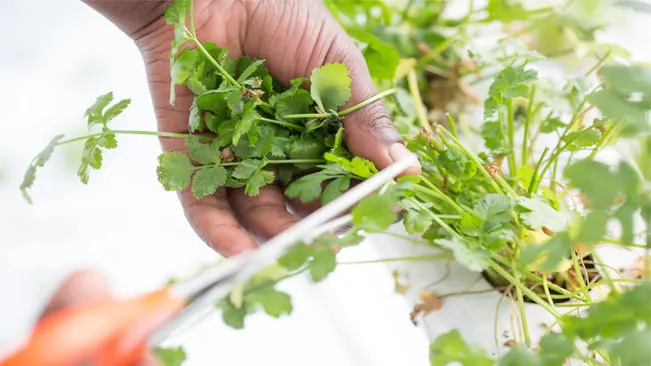
- Selective Cutting: Use scissors or your fingers to snip off the outer leaves of the cilantro plant. These are usually the largest and most mature leaves, ready for use.
- Leave the Center: Avoid cutting the small, inner leaves at the center of the plant. These are new growths that will mature and can be harvested later.
- Gentle Approach: Be gentle when harvesting to avoid damaging the plant. Rough handling can stress the plant and hinder further growth.
Benefits of Regular Harvesting
- Encourages Growth: Regular harvesting encourages the cilantro plant to produce more foliage. When you cut the mature leaves, the plant responds by growing more leaves to replace them.
- Prevents Bolting: Frequent harvesting can help delay the process of bolting, where the plant starts to flower and produce seeds. Once cilantro bolts, the leaves often become less flavorful.
Post-Harvest Care
- Watering: Continue to water the plant regularly but avoid overwatering. Consistent moisture is key for new growth.
- Fertilizing: A light application of a balanced, water-soluble fertilizer can help promote lush growth, especially if the plant shows signs of slowing down.
Harvesting the Entire Plant
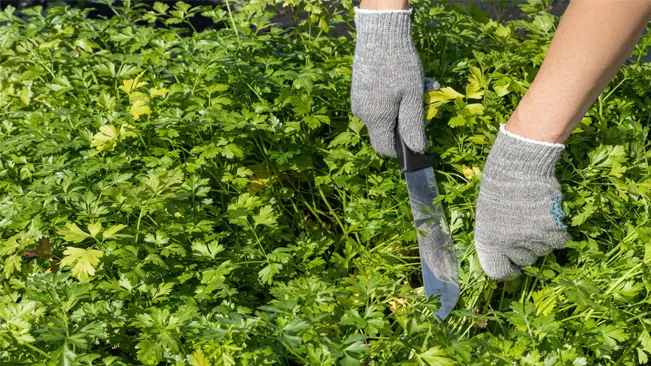
- If needed, cilantro plants can be harvested entirely by cutting at the base. However, this is usually done at the end of the season or when the plant shows signs of bolting.
- If you want a continuous supply, consider succession planting, where new seeds are sown every few weeks.
Storing Harvested Cilantro
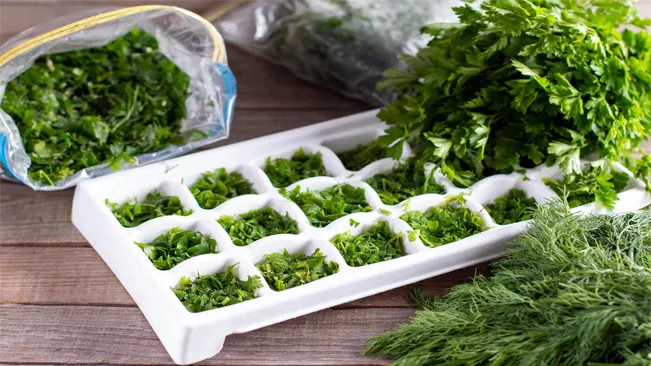
- Immediate Use: Freshly harvested cilantro is best used immediately to enjoy its full flavor.
- Refrigeration: To store cilantro, wrap the leaves in a damp paper towel and place them in a plastic bag in the refrigerator. This can keep them fresh for several days.
- Freezing: For longer storage, cilantro can be chopped and frozen in ice cube trays with water or oil.
Conclusion
Growing cilantro from seeds is a rewarding experience. With these simple steps, you’ll be able to enjoy fresh cilantro from your garden or windowsill. Remember, cilantro grows quickly and reseeds easily, so you’ll likely have a continuous supply throughout the growing season.
FAQs (Frequently Asked Questions)
- When is the best time to plant cilantro seeds?
The best time to plant cilantro seeds is in the spring and fall, as cilantro prefers cooler temperatures and may bolt in hot weather. - How deep should I plant cilantro seeds?
Cilantro seeds should be planted about ¼ inch deep in the soil. - How much space do cilantro plants need?
Space cilantro plants about 6 to 8 inches apart. If planting in rows, keep the rows approximately 12 inches apart. - Do cilantro seeds need full sun?
Cilantro grows best in full sun, but it can tolerate light shade, especially in hotter climates. - How often should I water cilantro?
Water cilantro regularly to keep the soil moist, but be careful not to overwater. The soil should be moist, not soggy. - Can I grow cilantro in a pot?
Yes, cilantro can be grown in pots. Make sure the pot has good drainage and use well-draining soil. - How long does it take for cilantro seeds to germinate?
Cilantro seeds typically germinate within 7 to 10 days under the right conditions. - When can I start harvesting cilantro?
You can start harvesting cilantro when the plants are about 6 inches tall. Harvest the outer leaves first. - How do I prevent my cilantro from bolting?
To prevent bolting, plant cilantro in cooler temperatures and provide some shade during the hottest part of the day. - Can I plant cilantro seeds indoors?
Yes, cilantro seeds can be planted indoors in containers. Ensure they get enough light and maintain the right temperature for germination.

Kristine Moore
Forestry AuthorI'm Kristine Moore, a seasoned garden landscaping professional with over 30 years of experience. My extensive career has been dedicated to transforming outdoor spaces into stunning, sustainable landscapes. With a deep understanding of horticulture, design principles, and environmental stewardship, I have become a respected figure in the field, known for creating harmonious, visually appealing, and eco-friendly gardens. My commitment to excellence and continuous learning in landscaping trends and techniques has solidified my reputation as an expert in garden design and implementation.

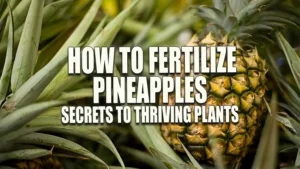
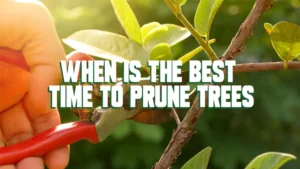







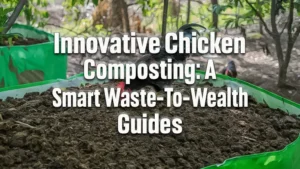


Leave your comment